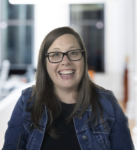What is prescription painkiller addiction? How can you tell someone is suffering from it?
Addiction to prescription painkillers occurs when someone has a compulsive need to use painkillers and is characterized by a loss of control and a preoccupation with obtaining and using the drug. Addiction is a behavioral problem that is very different from physiological problems such as dependence, tolerance and withdrawal. A physical dependence means you have developed withdrawal symptoms after ceasing to take a drug and tolerance refers to your body’s need for a larger dose is order to feel relief. Both dependence and tolerance are normal physiological processes, but addiction is a behavioral problem that is rare and needs specialized treatment.
What kinds of prescription meds are more likely to be abused?
* Opioids. Opioids are medications normally prescribed to treat pain. Common opioids are Vicodin (hydrocodone), OxyContin (oxycodone), Darvon (propoxyphene), Diluadid (hydromorphone), morphine, fentanyl, codeine, and other related medications.
* CNS depressants. CNS depressants are medications prescribed to treat anxiety and sleep disorders. They are tranquilizers or sedatives that slow normal brain function and include barbiturates (e.g.; Mebaral and Nembutal), benzodiazepines (e.g.; Valium and Xanax), and sleep medications such as Ambien, Sonata and Lunesta.
* Stimulants. Stimulants are medications prescribed to treat ADHD and narcolepsy. These include amphetamines (e.g.; Adderall and Dexedrine) and methylphenidates (e.g., Concerta and Ritalin).
How are prescription meds abused?
* Opioids can be taken orally or crushed into powder that can be snorted or dissolved in water to be injected.
* CNS Depressants can be taken orally and are sometimes combined with other prescribed drugs and illicit drugs to counteract or enhance their effects.
* Stimulants can be taken orally and crushed into powder that can be snorted or dissolved in water and then injected.
What are the risk factors for developing an addiction to prescription painkillers?
Not everyone who takes prescription painkillers will become addicted. In fact, addiction is rare and many pain sufferers are undertreated because of their fear of addiction. But as long as the medication is taken as directed, an addiction is unlikely to occur. People who are more at risk for addiction are those who have a previous history of substance abuse or dependency, or a family member who has a history of addiction.
Effects of prescription pain meds
Physical effects include:
* Euphoria
* Drowsiness
* Constipation
* Repertory depression
* Increased blood pressure and blood glucose
* Increased and/or irregular heart rate
Psychological effects include:
* Hostility
* Paranoia
Long-term effects include:
* Withdrawal symptoms of restlessness, muscle and bone pain, insomnia, diarrhea, vomiting, cold flashes, involuntary leg movements
* Seizures
* Cardiovascular failure
Consequences of prescription painkiller addiction
* Opioids are very dangerous if taken with alcohol and the combination can result in death.
* People taking CNS depressants should not take any medication or substance that causes drowsiness (including alcohol and over-the-counter cold and allergy medications) because it can slow the heat rate and respiration to the point of death.
* Stimulants should not be mixed with antidepressants (including some over-the-counter cold medicines) because it can result in dangerous levels of blood pressure or irregular heart rhythms.
Prescription painkiller addiction facts and statistics
* Among teens, prescription medications are the most commonly abused drugs, after marijuana. They are the number-one most commonly abused drugs among 12- to 13-year-olds. (NSDUH, 2006)
* The number of poison deaths caused by prescription medication abuse increased 62.5 percent from 1999 to 2004. (CDC, 2007)
* The abuse of prescription painkillers by young adults rose more than 12 percent between 2002 and 2007. (SAMHSA)
* An estimated 4.7 million Americans use prescription drugs non-medically. (NSDUH, 2003)




